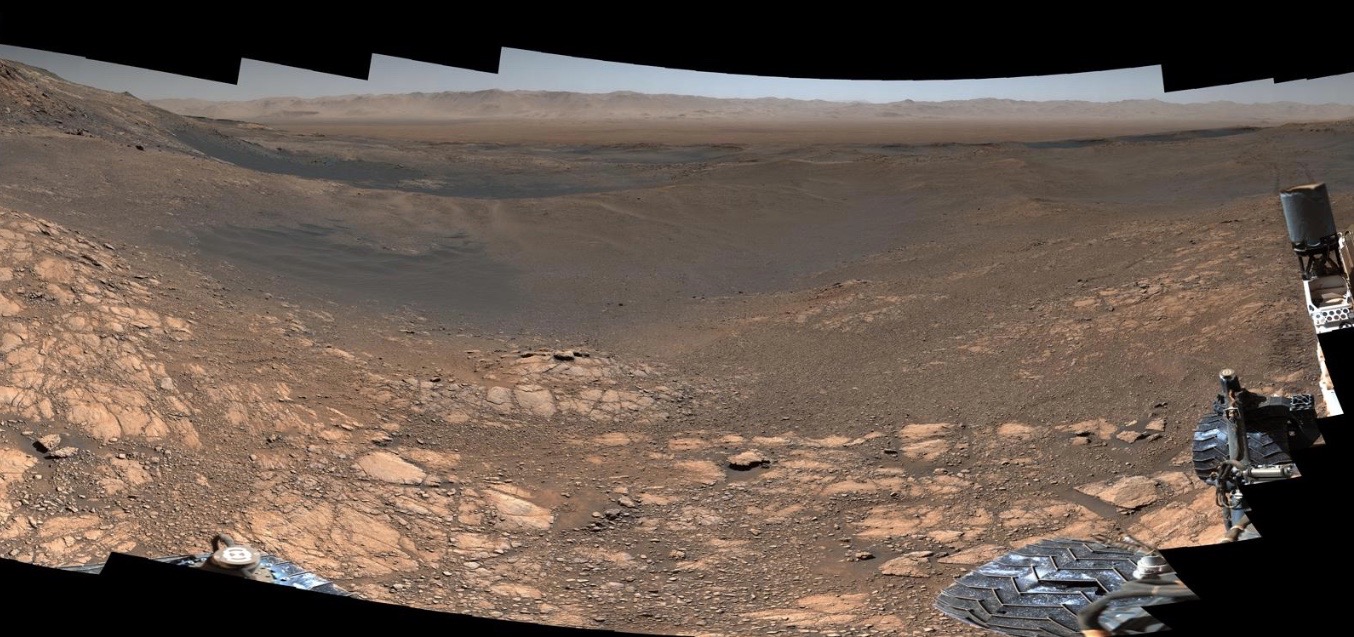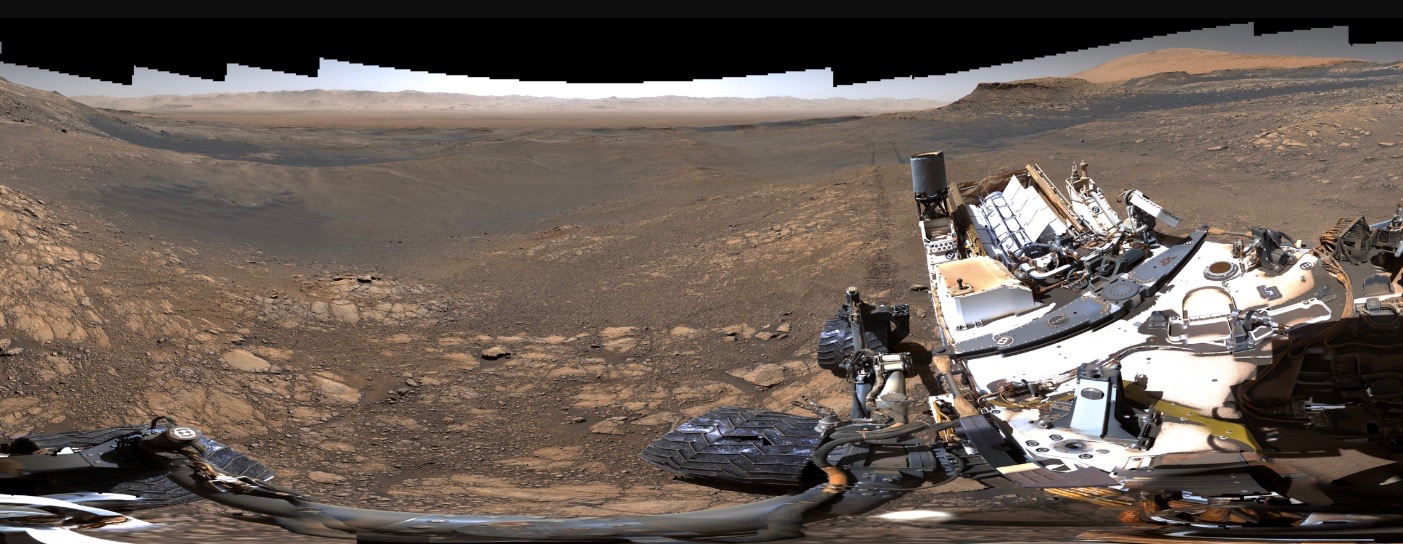
NASA's Curiosity Mars rover has given us its sharpest-ever view of the Red Planet.
The Curiosity team just released a 1.8-billion-pixel panorama that features Glen Torridon, a region on the flanks of Mars' 3.4-mile-high (5.5 kilometers) Mount Sharp that the rover has been exploring recently.
The new photo is a composite of more than 1,000 images that Curiosity snapped between Nov. 24 and Dec. 1, 2019, when the rover team was taking a break for Thanksgiving.
Related: Amazing Mars photos by NASA's Curiosity rover (latest images)
"While many on our team were at home enjoying turkey, Curiosity produced this feast for the eyes," Curiosity project scientist Ashwin Vasavada, of NASA's Jet Propulsion Laboratory (JPL) in Pasadena, California, said in a statement Wednesday (March 4).
"This is the first time during the mission we've dedicated our operations to a stereo 360-degree panorama," he added.
Curiosity took the panorama's constituent photos using the telephoto lens on the rover's Mast Camera (Mastcam). The rover's handlers programmed the photography in advance, instructing Curiosity to take the pictures between noon and 2 p.m. local Mars time each day to ensure consistent lighting conditions, NASA officials said.
Get the Space.com Newsletter
Breaking space news, the latest updates on rocket launches, skywatching events and more!
A second panorama that the rover team released today also spotlights Glen Torridon. This composite image, acquired using the Mastcam's medium-angle lens, is lower resolution, sporting "only" 650 million pixels.

These panoramas are zoomable, so the embedded photos in this story don't do them justice. To get the full experience, check out the originals via JPL here.
Curiosity landed inside Mars' 96-mile-wide (154 km) Gale Crater in August 2012, on a $2.5 billion mission to investigate the region's past potential to host microbial life. The car-size robot soon found compelling evidence that Gale hosted a habitable lake-and-stream system in the ancient past and that this system likely persisted for long stretches.
In September 2014, Curiosity arrived at the base of Mount Sharp, which rises from Gale's center. Ever since, the nuclear-powered rover has been climbing through the mountain's foothills, reading the rocks for clues about Mars' long-ago transition from a relatively warm and wet world to the cold desert planet we know today.
- The search for life on Mars: a photo timeline
- Photos: Ancient Mars lake could have supported life
- Ancient Mars lakes and laser blasts: Curiosity rover's 10 biggest moments in 1st 5 years
Mike Wall is the author of "Out There" (Grand Central Publishing, 2018; illustrated by Karl Tate), a book about the search for alien life. Follow him on Twitter @michaeldwall. Follow us on Twitter @Spacedotcom or Facebook.
OFFER: Save at least 56% with our latest magazine deal!
All About Space magazine takes you on an awe-inspiring journey through our solar system and beyond, from the amazing technology and spacecraft that enables humanity to venture into orbit, to the complexities of space science.
Join our Space Forums to keep talking space on the latest missions, night sky and more! And if you have a news tip, correction or comment, let us know at: community@space.com.

Michael Wall is a Senior Space Writer with Space.com and joined the team in 2010. He primarily covers exoplanets, spaceflight and military space, but has been known to dabble in the space art beat. His book about the search for alien life, "Out There," was published on Nov. 13, 2018. Before becoming a science writer, Michael worked as a herpetologist and wildlife biologist. He has a Ph.D. in evolutionary biology from the University of Sydney, Australia, a bachelor's degree from the University of Arizona, and a graduate certificate in science writing from the University of California, Santa Cruz. To find out what his latest project is, you can follow Michael on Twitter.
-
Geomartian Beautiful and tragicReply
Using crater counting of the Northern Hemisphere and the ages from some Martian meteorites I don't think it has been billions of years since Mars died.
Crater counting and some basalt meteorites indicate that the Northern Hemisphere might be less than 200 million years old.
Does anyone know of a phenomena that can resurface half a planet?
What effects would an interstellar comet like Borisov have done if it had struck a planet?
A very fast interstellar comet (of modest size) can have the same energy as a much larger slower moving comet from this neighborhood.
Oumuamua and Borisov, oh my. -
scienceboy Reply
Yes wind. Mars has regular and pretty dramatic dust storms. I imagine that could easily bury craters after 200 million years.Geomartian said:Does anyone know of a phenomena that can resurface half a planet? -
Geomartian Main stream science acknowledges that the Northern Hemisphere is buried in basalt (lava). What is contested is that it is just 200 million years old. This is related to a self-contradictory theory called the Late Heavy Bombardment produced by Houston.Reply
Until the appearance of an interstellar asteroid and comet no impact would have had the velocity/energy necessary to produce massive quantities of molten rock. In the absence of a mechanism explaining the seas of basalt on the Moon, Houston moved the impacts backward in time until the Moon was still partially liquid. With the arrival of Oumuamua and Borisov the Late Heavy Bombardment became a failed hypothesis.
The worse case velocity for an interstellar impact appears to be about 500 kilometres per second. The Hipparcos and Tycho Catalogues Table 3.6.3. The 150 Stars with Largest Transverse Velocities . . . . . . 486
(conjecture) If an interstellar comet punched through Mars (entering at Hellas Planitia and exiting somewhere in the Northern Hemisphere) it would have blown away most if not all of Mars’ atmosphere. There are sediments miles deep exposed on Mars, some of which were laid by water. The conditions we see now did not produce these sediments.










